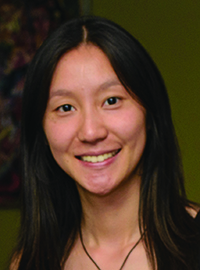Spring 2020 (Volume 30, Number 1)
Flying the Nest:
Transitioning to Practice
By Stephanie Tom, MD, FRCPC
Download PDF

Life is full of change. One of the big milestones in a physician’s journey is leaving the training phase for independent practice.
Ways to explore potential paths after residency may include:
- Electives: Whether you are interested in pursuing a community, academic or mixed model, these rotations are an opportunity to visit different offices and see a range of practice styles.
- Locums: From hospital shifts to clinic coverage, residents and early career physicians experience the juggle of work-life balance while researching potential work environments.
Locuming is a defined commitment to cover a colleague’s practice. The locum duration can range from being short-term (i.e. a few weeks for an extended vacation or medical leave) to longer-term (i.e. parental leave). Locums are typically designed to provide time-limited but crucial clinical coverage, and may be a prelude to join an existing team.
It is recommended to have a contract, to provide a systematic approach regarding coverage duration, expectations, patient transfer-of-care process, and negotiation of a cost-sharing model. Contract templates may be found through colleagues, local institutions or even your provincial medical association resources. The contract should be customized to one’s specific arrangement, and may even benefit from having formal legal review. Being a locum typically involves transfer of patient care back to the host physician after the defined period.
When ready to set up with one’s own roster of patients, factors to consider may include:
- Professional and personal network and development opportunities: A professional network can expand beyond other rheumatologists to include primary care providers and other specialists for co-management and/or allied health professionals. Personal life commitments can also guide geographical preferences.
- Patient population and scope of practice, such as general rheumatology or a more niched scope based on expertise and interest.
- Practice setup: There are benefits and risks of solo (autonomy) vs. group-based practices (economies of scale, having colleagues, cross-coverage options). There is also a checklist of logistical tasks (i.e. electronic medical record [EMR] selection, lease duration, etc).
- Potential future opportunities to evolve one’s practice such as having hospital and/or teaching privileges, participating in research, advocacy, administration and/or multidisciplinary models of care.
In addition to discussions with peers and mentors, it can also be helpful to attend provincial and local medical association workshops, and to review College expectations and the CMPA Good Practices Guide1 as practice management resources. The learning phase of practice, however, doesn’t stop once you open up your clinic doors. By staying connected with colleagues, having coaches, and mentoring others, you will be able to adapt to changing environments and help facilitate the exchange of resources and new ideas.2 Life is a journey best travelled together.
References:
1. CMPA Good Practices Guide. Available at https://www.cmpa-acpm.ca/serve/docs/ela/goodpracticesguide/pages/index/index-e.html. Accessed February 2020.
2. Gawande, Atul. Personal Best. The New Yorker 2011. Available at https://www.newyorker.com/magazine/2011/10/03/personal-best. Accessed February 2020.
Stephanie Tom, MD, FRCPC
Division Head, Rheumatology, Trillium Health Partners
Mississauga, Ontario
|




